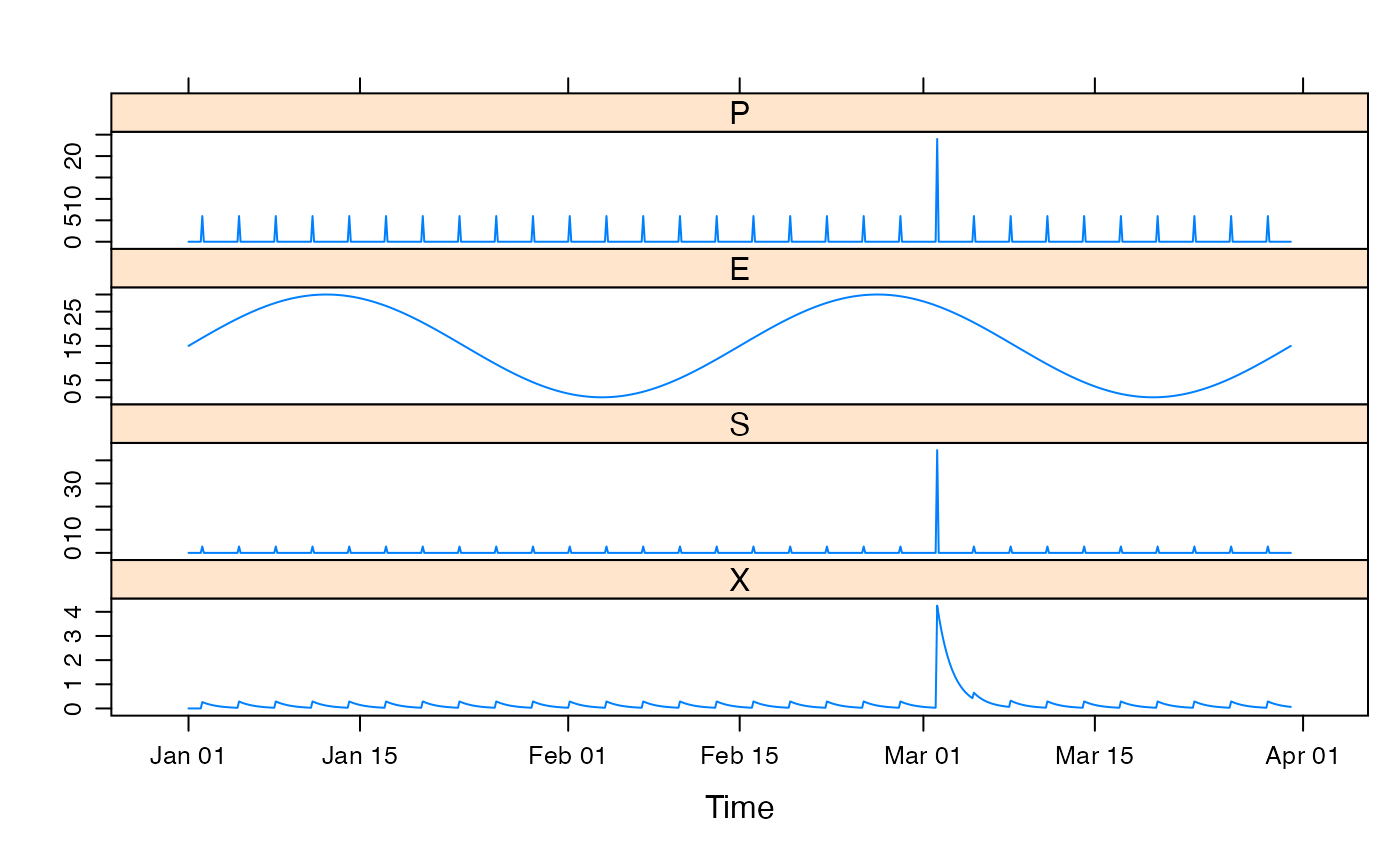Runoff as rainfall to a power. This allows an increasing fraction of runoff
to be generated by increasingly intense/large rainfall events (for
power > 0). The fraction increases up to a full runoff level at
maxP.
intensity.sim(DATA, power, maxP = 500, scale = 1, return_state = FALSE)Arguments
- DATA
time-series-like object with columns
P(precipitation) andQ(streamflow).- power
power on rainfall used to estimate effective rainfall.
- maxP
level of rainfall at which full runoff occurs (effective rainfall == rainfall).
- scale
constant multiplier of the result, for mass balance. If this parameter is set to
NA(as it is by default) inhydromadit will be set by mass balance calculation.- return_state
ignored.
Value
the simulated effective rainfall, a time series of the same length as the input series.
See also
hydromad(sma = "intensity") to work with models as
objects (recommended).
Examples
## view default parameter ranges:
str(hydromad.options("intensity"))
#> List of 1
#> $ NA: NULL
data(HydroTestData)
mod0 <- hydromad(HydroTestData, sma = "intensity", routing = "expuh")
mod0
#>
#> Hydromad model with "intensity" SMA and "expuh" routing:
#> Start = 2000-01-01, End = 2000-03-31
#>
#> SMA Parameters:
#> lower upper
#> power 0 2
#> maxP 100 1000
#> scale NA NA
#> Routing Parameters:
#> NULL
## simulate with some arbitrary parameter values
mod1 <- update(mod0, power = 1, maxP = 200, tau_s = 10)
## plot results with state variables
testQ <- predict(mod1, return_state = TRUE)
xyplot(cbind(HydroTestData[, 1:2], intensity = testQ))
 ## show effect of increase/decrease in each parameter
parRanges <- list(power = c(0, 2), maxP = c(100, 500), scale = NA)
parsims <- mapply(
val = parRanges, nm = names(parRanges),
FUN = function(val, nm) {
lopar <- min(val)
hipar <- max(val)
names(lopar) <- names(hipar) <- nm
fitted(runlist(
decrease = update(mod1, newpars = lopar),
increase = update(mod1, newpars = hipar)
))
}, SIMPLIFY = FALSE
)
xyplot.list(parsims,
superpose = TRUE, layout = c(1, NA),
main = "Simple parameter perturbation example"
) +
latticeExtra::layer(panel.lines(fitted(mod1), col = "grey", lwd = 2))
## show effect of increase/decrease in each parameter
parRanges <- list(power = c(0, 2), maxP = c(100, 500), scale = NA)
parsims <- mapply(
val = parRanges, nm = names(parRanges),
FUN = function(val, nm) {
lopar <- min(val)
hipar <- max(val)
names(lopar) <- names(hipar) <- nm
fitted(runlist(
decrease = update(mod1, newpars = lopar),
increase = update(mod1, newpars = hipar)
))
}, SIMPLIFY = FALSE
)
xyplot.list(parsims,
superpose = TRUE, layout = c(1, NA),
main = "Simple parameter perturbation example"
) +
latticeExtra::layer(panel.lines(fitted(mod1), col = "grey", lwd = 2))
